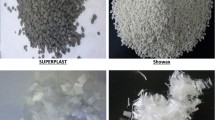Abstract
Increasing traffic loading and volumes on roads has led to the use of polymer modified binders to improve the performance of bitumen in terms of additional strength, durability and increased resistance to rutting and fatigue cracking. Generally those modifiers currently in use are virgin polymers but the research investigates the possibility of using waste polymers instead. The aim was to find a recycled polymer modified binder that would be similar to a proven modified binder (Polyflex 75) or would augment the properties of 100 penetration grade bitumen.
A wide range of recycled polymers was tested including polyethylenes, polypropylenes, polyetherpolyurethane, ground rubber and truck tyre rubber. Although there were some problems with stability in the bitumen some were found to be successful. The blend with 3% by mass of low density polyethlyene substituted for 1% by mass of sytrene butadiene styrene had similar properties to that of Polyflex 75 although it had a lower stiffness. A combination of ethylene vinyl acetate with low density polyethylene showed similar viscosity to that of a 100 penetration bitumen while having an increased softening point. The blends showing promise need to be subjected to further investigation, in particular to evaluate how these blends perform in optimised bituminous mixes.
Résumé
La charge et le volume croissants de la circulation routière ont conduit à l'emploi de liants modifiés aux polymères pour améliorer les propriétés performantielles du bitume, à savoir le renforcement de la solidité, la durabilité et l'accroissement de la résistance à l'orniérage et aux criques de fatigue. En général les agents modifiants actuellement utilisés sont des polymères vierges, toutefois notre recherche était axée sur la possibilité d'utiliser des déchets plastiques émulsifiés. Le but était de trouver un liant modifié au polymère recyclé similaire à un liant modifié ayant fait ses preuves (Polyflex 75) ou pouvant améliorer les propriétés du bitume de pénétration qualité 100.
Une gamme variée de polymères recyclés a été mise à l'essai, comprenant des polyéthylènes, des polypropylènes des polyuréthanes de polyéther, du caoutchouc pilé et du caoutchouc de pneus poids lourds. Bien que certains problèmes de stabilité bitumineuse se soient manifestés, certaines expériences se sont avérées fructueuses. Le mélange à 3% par masse de polyéthylène basse densité substitué à un mélange à 1% par masse de styrène-butadiène-styrène s'est avéré avoir des propriétés similaires à celles du Polyflex 75, en dépit d'une rigidité inférieure. On a obtenu une viscosité similaire à celle d'un bitume de pénétration qualité 100 en mélangeant un acétate de vinyle à l'éthylène avec un polyéthylène à basse densité, tout en maintenant un point de ramollissement supérieur. Les mélanges prometteurs doivent être soumis à de nouvelles analyses, dans le but spécifique d'évaluer la performance de tels mélanges dans des matériaux optimisés au liant hydrocarboné.
Similar content being viewed by others
References
Johnston, I., ‘Modified bitumen for inproved highway performance’,J. Inst. High. and Trans. 41 (12) (1994) 18–19.
Plastics Industry Association (PIA), ‘The Plastic Industry Yearbook 1997/'98,’ (Technology Ireland, Ireland, 1997).
Beam, R. J., ‘Polyethylene, High density (HDPE)’, Rubin, II (Ed.), Handbook of Plastic Materials and Technology. (John Wiley and Sons Inc., UK, 1990).
Hanna, R. D., ‘Polypropylene’, Rubin, II (Ed.) Handbook of Plastic Materials and Technology. (John Wiley and Sons Inc., UK, 1990).
Clifford, R.J., ‘Porous Asphalt-Effect of binder type on Elastic Stiffnes and Ageing Susceptibility’, MSc Thesis (Trinity College Dublin, Ireland 1996).
Whiteoak, D. and Shell Bitumen UK, ‘The Shell Bitumen Handbook’, (Shell Bitumen, UK, 1990).
Institute of Petroleum, ‘Softening Point of Bitumen-Ring & Ball’. Designation IP 58/86, UK, 1989.
Institute of Petroleum, ‘Standard Method of test for Penetration of Bituminous Materials’, Designation IP 49/86, UK, 1989.
Murphy, M., ‘Modification of Bitumen with Recycled Polymers’, MSc Thesis (Trinity College Dublin, Ireland, 1999).
Author information
Authors and Affiliations
Rights and permissions
About this article
Cite this article
Murphy, M., O'Mahony, M., Lycett, C. et al. Bitumens modified with recycled polymers. Mat. Struct. 33, 438–444 (2000). https://doi.org/10.1007/BF02480663
Received:
Accepted:
Issue Date:
DOI: https://doi.org/10.1007/BF02480663




